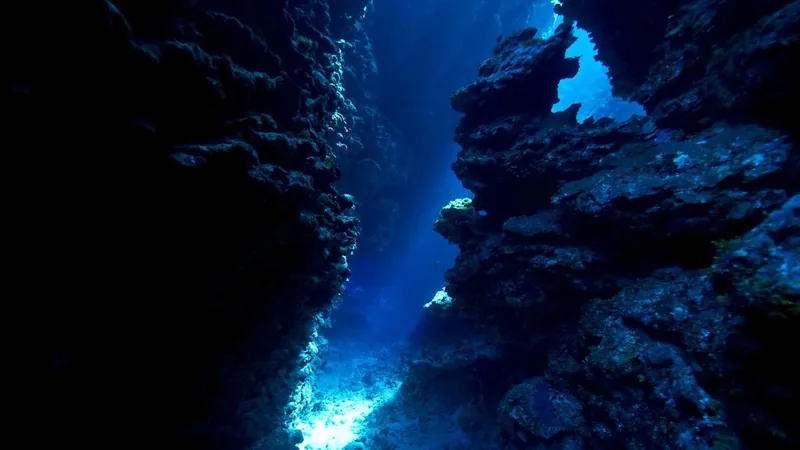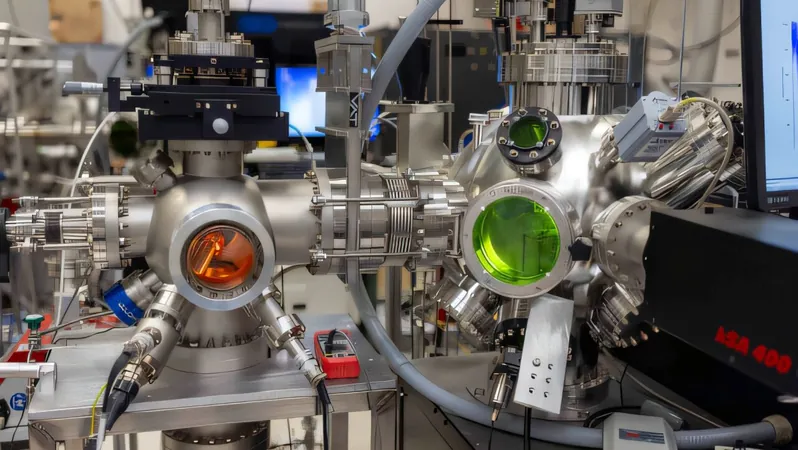
Scientists Discover 10-Million-Year-Old Kilonova Remnants Buried Beneath the Ocean Floor!
2025-03-21
Author: Yu
Groundbreaking Discovery
Recent groundbreaking research has revealed that traces of radioactive plutonium discovered at the bottom of the ocean are actually remnants from a cataclysmic kilonova explosion that took place approximately 10 million years ago, not far from our planet.
What is a Kilonova?
A kilonova is a cosmic event that occurs when two neutron stars in a binary system spiral closer together and ultimately collide. This dramatic collision releases an extraordinary amount of heavy elements into space, which eventually finds its way to celestial bodies, including Earth.
Research Insights
Astronomer Brian Fields from the University of Illinois Urbana-Champaign, a leading figure in this study, presented these findings at the 2025 American Physical Society Global Physics Summit, where he referred to our planet as a "supernova graveyard." Fields and his team have been analyzing cosmic materials sourced from both Earth and the Moon. Their research indicates that while similar debris from supernova explosions occurred 3 million and 8 million years ago, the specific plutonium samples they studied could only have originated from the more recent kilonova event.
The Process Behind Kilonova Events
When massive stars exhaust their hydrogen fuel, they undergo a process of fusion that creates heavier elements until they can no longer progress past iron due to its stability. At this point, the gravity of these stars—whose mass can be more than eight times that of our Sun—causes them to collapse. The resulting neutron stars are incredibly dense and hot, providing the right conditions for a kilonova event to occur when they collide, resulting in an explosive release of heavier elements through a process known as the rapid neutron-capture process or r-process.
Elements from Kilonova Collisions
The fallout from such collisions can shower the surrounding space with valuable elements like gold, platinum, and thorium. Many of these materials eventually settle on Earth, with some ending up in our oceans due to geological processes and ocean currents that spread this cosmic debris.
Challenges in Discovery
Although the discovery is fascinating, it comes with a caveat: Earth’s dynamic geology means that finding concentrated deposits of this material on our planet is challenging.
The Moon as a Research Opportunity
However, Fields suggests that the Moon offers an unparalleled opportunity for research; its surface is largely untouched by weather and could harbor untouched samples from ancient cosmic events. The forthcoming Artemis III mission—set to be the first crewed lunar landing since Apollo—should prioritize the collection of these stardust remnants, which could provide deeper insights into the nature of the kilonova and our universe’s history.
Safety of Plutonium
As for the plutonium itself, there’s no need for concern; it is buried deep beneath the ocean floor, far outside the reach of casual beachgoers.
Future Research Directions
This thrilling intersection of astronomy and oceanography opens doors to many more questions about our universe's origins, the lifecycle of stars, and the cosmic phenomena that shape our very existence! Stay tuned as we unravel more mysteries hidden in the stars!






 Brasil (PT)
Brasil (PT)
 Canada (EN)
Canada (EN)
 Chile (ES)
Chile (ES)
 Česko (CS)
Česko (CS)
 대한민국 (KO)
대한민국 (KO)
 España (ES)
España (ES)
 France (FR)
France (FR)
 Hong Kong (EN)
Hong Kong (EN)
 Italia (IT)
Italia (IT)
 日本 (JA)
日本 (JA)
 Magyarország (HU)
Magyarország (HU)
 Norge (NO)
Norge (NO)
 Polska (PL)
Polska (PL)
 Schweiz (DE)
Schweiz (DE)
 Singapore (EN)
Singapore (EN)
 Sverige (SV)
Sverige (SV)
 Suomi (FI)
Suomi (FI)
 Türkiye (TR)
Türkiye (TR)
 الإمارات العربية المتحدة (AR)
الإمارات العربية المتحدة (AR)